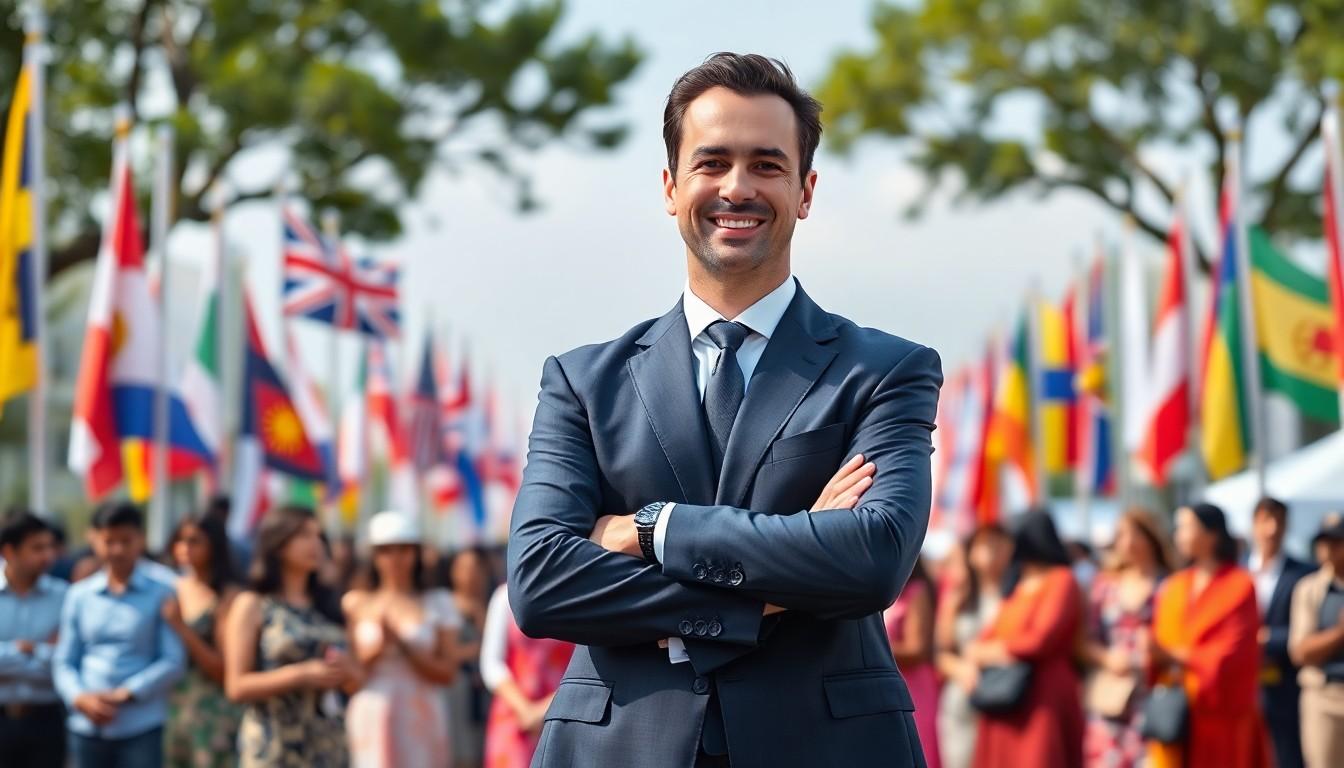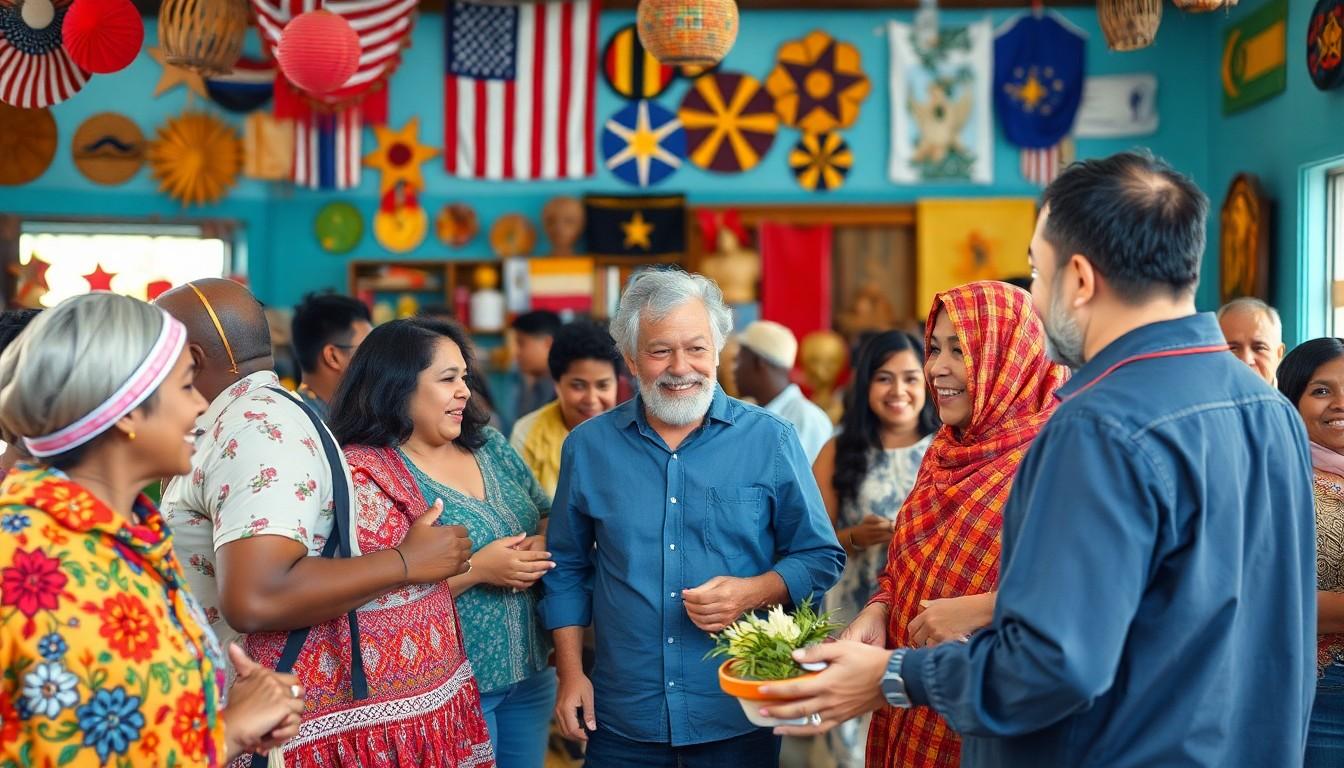The Best Fluffy Pancakes recipe you will fall in love with. Full of tips and tricks to help you make the best pancakes.

Public Diplomacy: The Secret to Strengthening International Relations Today
Public diplomacy isn’t just a fancy term thrown around at global summits; it’s the secret sauce in the recipe for international relations. Imagine countries engaging in a friendly chat over coffee instead of throwing diplomatic tantrums. This approach transforms traditional diplomacy into a dynamic conversation, where nations strive to win hearts and minds instead of just negotiating treaties.
Public Diplomacy
Public diplomacy plays a vital role in shaping international relations through communication and engagement. This approach promotes mutual understanding between countries, facilitating positive interactions rather than conflict.
Definition and Significance
Public diplomacy refers to the way countries promote their interests and values through communication with foreign publics. Engagement with citizens, media, and organizations fosters goodwill and enhances a nation’s image. Its significance lies in building strong relationships that extend beyond formal diplomatic channels. Effective public diplomacy includes cultural exchanges, social media initiatives, and international broadcasting. These efforts yield tangible benefits, such as increased trade, enhanced security collaboration, and a positive global reputation.
Historical Context
Historical developments shaped the evolution of public diplomacy. Early forms date back to the 20th century, during World War I, when countries recognized the importance of winning hearts and minds. Following World War II, the establishment of organizations such as the United States Information Agency marked a new era. The Cold War further emphasized the role of public diplomacy in countering propaganda and shaping public perceptions. Advances in technology and globalization continue to influence public diplomacy strategies, shifting focus toward digital engagement and international outreach.
Key Elements of Public Diplomacy

Public diplomacy relies on specific elements to effectively engage international audiences. These elements encompass communication strategies and engagement techniques that reinforce a nation’s interests and image.
Communication Strategies
Crafting targeted messages is essential in public diplomacy. Different audiences may require tailored communication approaches to resonate effectively. Utilizing various media platforms, such as social media, television, and radio, allows nations to reach broader audiences. Emphasizing storytelling enables countries to convey values and cultural narratives, fostering emotional connections. In addition, using influencers or opinion leaders can amplify messages, enhancing credibility. Continuous feedback from audiences helps refine strategies, improving engagement efforts. Monitoring trends and adapting communication accordingly keeps nations relevant in a rapidly changing global landscape.
Engagement Techniques
Diverse engagement techniques foster connections between countries and foreign publics. Cultural exchange programs offer firsthand experiences, showcasing national heritage and values. Collaborative projects in science, education, and technology promote shared goals and mutual understanding. Hosting international events, such as conferences and exhibitions, provides platforms for dialogue and networking. Utilizing grassroots initiatives strengthens community ties, creating local ambassadors for national interests. Incorporating public opinion surveys informs policy adjustments, ensuring responsiveness to global expectations. Each technique supports building lasting relationships, enhancing a nation’s soft power and international presence.
Public Diplomacy in Practice
Public diplomacy manifests through various initiatives that enhance international relations. Countries employ different strategies to engage foreign publics and build stronger ties collaboratively.
Case Studies
Numerous countries exemplify effective public diplomacy. For instance, Sweden’s “Living History Forum” highlights historical narratives, promoting understanding through educational outreach. India’s cultural diplomacy, notably the International Day of Yoga, unites diverse populations around shared values. Each case demonstrates the power of culture in fostering goodwill and cooperation.
Success Stories
Success in public diplomacy often results from strategic initiatives. The Marshall Plan, implemented after World War II, revitalized European economies while projecting American values abroad. Furthermore, South Korea’s “K-Pop Diplomacy” enhances its image globally, attracting attention and admiration. These successes showcase how tailored efforts can create positive perceptions and strengthen relationships between nations.
Challenges Facing Public Diplomacy
Public diplomacy faces several significant challenges that affect its effectiveness in global communication and engagement.
Political Barriers
Political barriers often hinder public diplomacy efforts. Governments may impose restrictions on foreign engagement, limiting the ability to connect with foreign publics. Political instability can disrupt diplomatic initiatives, causing uncertainty and hesitance among nations. In some instances, conflicting national interests lead to fractured dialogues, weakening the potential for cooperation. Countries may face backlash for perceived propaganda attempts, causing public skepticism. Furthermore, leadership changes can drastically alter diplomatic priorities, shifting focus away from public diplomacy strategies.
Cultural Differences
Cultural differences present another challenge in public diplomacy. Understanding varied cultural contexts is essential for establishing effective communication. Misinterpretations can arise when messages don’t resonate with target audiences. Diverse political and social norms may create obstacles in dialogues, complicating relationship-building efforts. While some cultures may prioritize direct communication, others value indirect approaches, necessitating adaptability in strategies. Emotional responses to global issues can amplify misunderstandings, emphasizing the need for cultural sensitivity. Engaging with multiple cultural perspectives aids in developing a more holistic public diplomacy approach.
Future of Public Diplomacy
The future of public diplomacy hinges on adaptation and innovation. Organizations increasingly prioritize digital engagement strategies. Social media platforms create direct communication channels, allowing nations to connect in real time with global audiences. Tools like artificial intelligence enhance personalized outreach, ensuring messages resonate more effectively.
Focus on grassroots movements strengthens community involvement in diplomacy. Collaborative projects draw communities together, fostering shared narratives that enhance understanding. Cultural initiatives continue to thrive, showcasing a nation’s values and drawing interest worldwide.
Trends to Watch
Emerging technologies drive public diplomacy forward. Virtual reality and augmented reality experiences allow audiences to engage deeply with foreign cultures. Data analytics provide insights into audience opinions, enabling tailored approaches that connect sincerely. Additionally, increased emphasis on environmental issues reflects global priorities, prompting nations to showcase sustainable practices and cooperation.
Heightened collaboration among non-state actors, such as NGOs and private companies, expands public diplomacy’s reach. Interdisciplinary partnerships leverage unique expertise to tackle complex challenges, promoting shared goals across borders. Engagement with influencers and digital creators strengthens message visibility, amplifying narratives that foster goodwill.
Policy Recommendations
To navigate the evolving landscape, nations should invest in training diplomats in digital communication. Developing skills in social media management and content creation enhances effectiveness. Additionally, fostering cross-sector partnerships ensures diverse perspectives shape public diplomacy initiatives.
Prioritizing cultural sensitivity remains crucial. Policymakers must encourage understanding of different cultural contexts, improving communication strategies. Incorporating real-time feedback mechanisms allows for responsive adaptations in public diplomacy efforts. Furthermore, allocating resources to support grassroots initiatives strengthens community ties and enhances a nation’s soft power.
Public diplomacy stands as a crucial element in the fabric of international relations. By fostering open communication and cultural exchange, it builds bridges between nations and their citizens. The evolution of this practice reflects the changing dynamics of global engagement, emphasizing the need for adaptability in strategies.
As technology continues to reshape how countries interact, the focus on digital diplomacy and grassroots initiatives will only grow. Nations that prioritize cultural understanding and innovative outreach will likely enhance their soft power and create lasting relationships. The future of public diplomacy lies in its ability to resonate with diverse audiences while promoting shared values and mutual respect.
